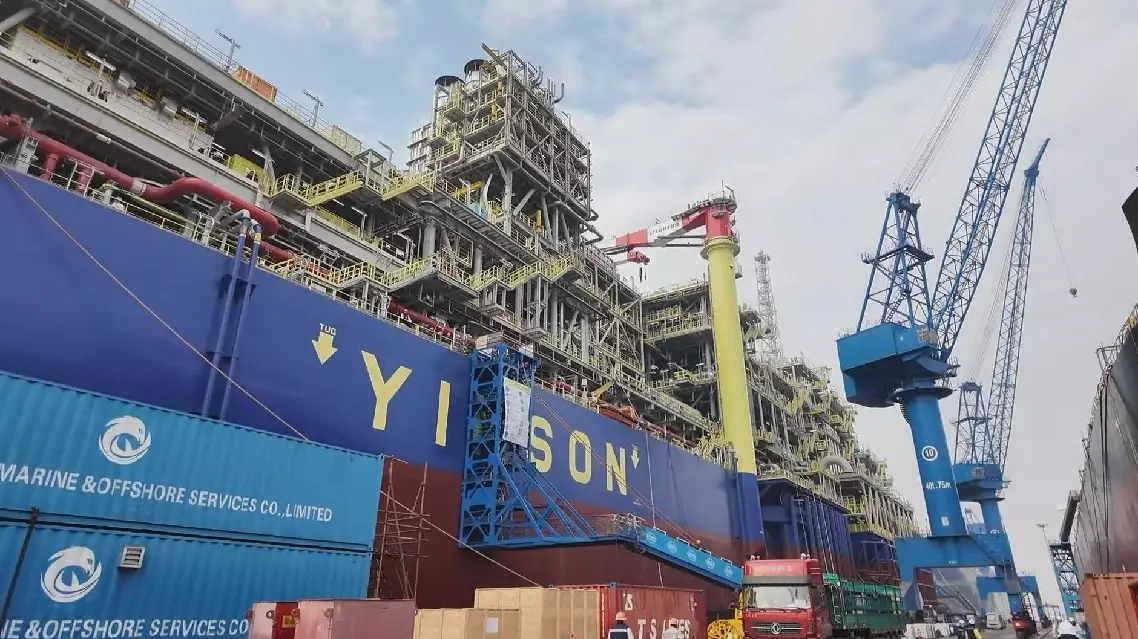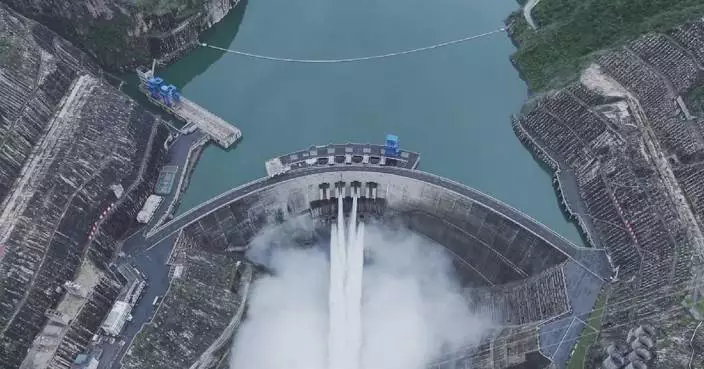China recently completed the construction of the world's first offshore floating production and storage vessel equipped with carbon capture and storage (CCS) technology. The vessel is scheduled for delivery by the end of February.
The ship, measuring 333 meters in length and 60 meters in width, has a daily crude oil production capacity of 120,000 barrels. It has the ability to capture carbon dioxide produced during both its voyage and oil production processes.
Additionally, it harnesses waste heat from exhaust gases to generate electricity, fulfilling both environmental protection and energy-saving goals. This technological breakthrough marks a significant step forward for China in the field of offshore carbon capture.
"The high tower you see here is actually a collection and cleansing tower for carbon capture. The pipes labeled with green marks are the entry points for exhaust gases, which are drawn into the cleansing tower by the fans. Inside the tower, there are absorbents that capture the hydrocarbons from the exhaust gases, resulting in exhaust air with significantly lower carbon emissions," said Xu Xiaohua, senior project manager at Shanghai COSCO Shipping Heavy Industry Co., Ltd., the builder of the vessel.
In 2023, global offshore oil and gas production emitted approximately 38 million tons of CO2. The figure is expected to rise to nearly 50 million tons by 2030 if without any control.
Carbon capture and storage technologies offer a greater potential for reducing emissions in offshore oil and gas operations, providing a new solution for achieving global carbon peak and carbon neutrality goals.

China constructs world’s first offshore floating production, storage vessel with carbon capture technology









